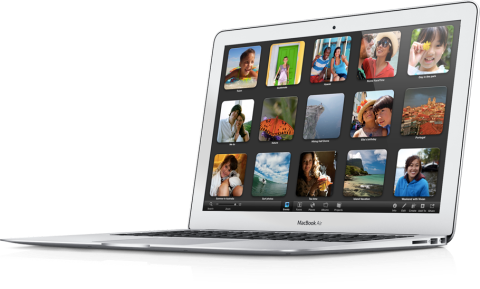The Perfect Laptop
I don’t work in an office, my company calls it “virtual office” instead. Basically I work either at home or at customer’s. That’s not bad, as I can manage better my life/work balance (I nonetheless work more than what I did in a “regular” office).
Traveling is part of my life, and I like it. Unfortunately until recently I was more or less “forced” to use company tools, like phones or laptops.
Then BYOD came. I like it very much as it allows me to choose the tools that help me do a better job.
That’s why I have an iPhone. With proper care you can use it also as a phone (mophie cover for extra battery and reception enhancement).
That’s why I use a Macbook Pro.
I am a Mac user since I had enough money to afford one. I’ve been a unix system administrator and programmer for years, so it’s natural to me to like the OSX. I’m also a hobbyist filmmaker and until not so long ago it required to use Mac to access valid professional tools. Even Adobe software, born on Windows, performed so much better on a Mac.
Unfortunately, my company relies a lot on Windows software, especially Internet Explorer for key tools, therefore I need Windows as well. Since I cannot bring two laptops with me the only viable and reasonable choice is a Mac. Windows runs smoothly and impressively good on a Mac and Apple made sure you have all drivers you need and a very simple partitioning and installation tool for Windows dual-boot.
That’s brilliant. Instead, you cannot run both windows and osx on a regular laptop without hacks and stability, hardware, feature limitations.
My real problem is that my Macbook Pro 15″ is a bit heavy and despite being very powerful it’s a little uncomfortable for traveling.
The Perfect Laptop is then Macbook Air 13″ i7 8Gb RAM. Only one defect: €1.829 is the price you pay for perfection. To go beyond perfection, well, let’s ask Apple to add Retina Display 🙂
BYOD from a user perspective
 BYOD is the new word in the Enterprise business. Bring Your Own Device, meaning that your company allows you to use your laptop, phone, tablet as work tool. Advantages are obvious: you use a tool of your liking and the company saves a lot of money. In theory.
BYOD is the new word in the Enterprise business. Bring Your Own Device, meaning that your company allows you to use your laptop, phone, tablet as work tool. Advantages are obvious: you use a tool of your liking and the company saves a lot of money. In theory.
When you bring an uncontrolled item inside your organization, you pose a real threat, risk being higher because there is no control over your device and any possible malware you could carry in.
To tackle this BIG issue, a lot of experts proposed solutions, most commonly to enforce security through centralized policy, blocking unauthorized functions and software. I’d imagine that the user, so happy to bring his shiny new iPhone 4S at work, won’t be as much excited to see it locked down even when out of office.
Users have the nasty habit of being smarter that IT when it comes to use their favorite stuff, even if that’s not allowed (Murphy’s Law: Nothing is FoolProof).
Personally, I have the same attitude. I find difficult to stop using tools that make my life easier, my work more efficient. Dropbox, for example: it’s an amazing tool, but most companies have it on blacklist, as it’s an unsanctioned cloud storage outside IT boundaries. Nonetheless it’s a wonderful tool for it’s simplicity and easiness of use. Would you give it up for a clunky, slow and complicated windows sync? No, that’s for sure. Then you will try to find a way to use it anyway and according to Murphy’s you will succeed.
At work, many colleagues still use Windows Vista. Slow and buggy, they spend hours dealing with malfunctioning instead of work. I used my own Mac as much as I could, even if I had a fast laptop at my disposal. Why? because for what I do OSX is faster and more efficient. Now I switched back to Windows 7 because my Mac doesn’t have IE9, that is required for several tools I need. My goal is efficiency and I’m sorry if IT doesn’t like it, but I have my job to do.
Don’t get me wrong: I totally sympathize with IT people, I’ve been one of them for years. I understand it very well, especially from security perspective, but we all know it’s a lesson we should learn sooner or later: IT is at user’s service, not the opposite. As IT people, we’re frustrated by certain user behavior, but that’s part of the job.
I think the solution could be a compromise as tapping into consumer resources and using sandboxes, virtual environments, content control (watermarking, hashing, digital certificates) to facilitate users instead of fighting them.
If you want to read more about the so-called “Shadow IT”, try here.

